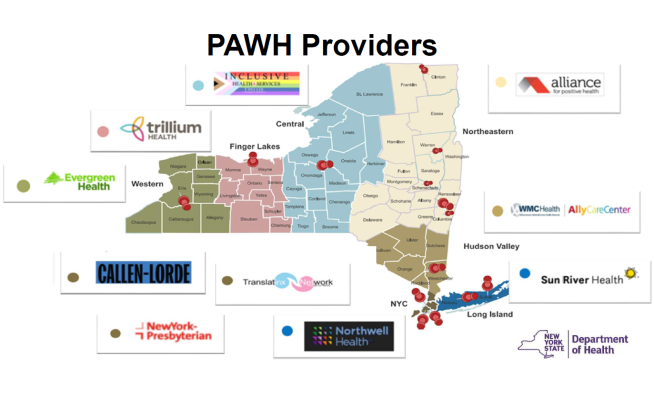HIV and Aging - New York State AIDS Institute
Nearly 60 percent of those living with diagnosed HIV in New York State are over 50 years old and that percentage is expected to increase in the years to come. Effective antiretroviral therapy has enabled individuals living with HIV to live long and full lives. Yet a host of medical and social issues often impact both long-term survivors of any age and those who are diagnosed with HIV later in life. HIV and aging-related medical comorbidities, early onset of aging-related issues, isolation and loneliness, historical and intersectional trauma, as well as a host of other problems can impact people aging with HIV (PAWH), their medical outcomes and their well-being. The links above will lead to various pages highlighting many HIV and Aging programs and resources offered through the New York State Department of Health AIDS Institute (AI) and beyond. The information identified for consumers and providers is separated but each page may contain information suitable for either.

View a text version of the map
| Organization Name | Region |
|---|---|
| SUNY Upstate Medical University/Inclusive Health Services | Central New York |
| Trillium Health | Finger Lakes |
| Westchester Medical Center/ Ally Care Center | Hudson Valley |
| Northwell Health/CART | Long Island/Nassau |
| Sun River Health | Long Island/Suffolk |
| Callen-Lorde | New York City |
| New York Presbyterian Hospital | New York City |
| Translatinx Network | New York City |
| Alliance for Positive Health (AIDS Council of Northeastern New York) | Northeastern New York |
| Evergreen Health | Western New York |
The People Aging with HIV (PAWH) Pilot, funded by the New York State Department of Health AIDS Institute from 2022-2027, provides services to support the health of people living with diagnosed HIV over 50 years of age.
Services include outreach, non-medical and medical case management, health education, psychosocial support services, insurance navigation, cognitive, physical, and behavioral screening services and other tailored services identified regionally that are consistent with the pilot goals.
Program models include both medical facilities and community-based organizations statewide and address barriers and needs of older adults living with HIV so that they can maintain optimal health, including but not limited to sustained viral suppression, improved management of co-morbidities, and improved emotional health and sense of social connectedness. Special projects outcomes (i.e., Advance Directives Pilot Project, collaboration efforts with New York State Office for Aging.) and a full evaluation of the PAWH pilot will be available in 2026.
- People Aging with HIV (PAWH) provider directory (PDF)
- Community Support Services - Other related support services through the AIDS Institute's Bureau of Community Support Services (including Benefits Counseling, Legal, and Ryan White Supportive Services)
- Supportive Housing Services - AIDS Institute Housing related services
Prevention
A growing number of adults over 50 are diagnosed with HIV and other Sexually Transmitted Infections (STI's).
- Older Adults and Sexual Health (PDF)
- Sexually Transmitted Infections Information for Providers
- Pre Exposure Prophylaxis (PrEP)
- PrEP Aware Week
Lifetime Survivors
People who have acquired HIV perinatally, known as lifetime survivors, also show signs of advanced aging. As of 2022, more than 12,600 lifetime survivors lived in the US, with over 2300 living in New York State (cdc_156509_DS1.pdf, Figure 44). Although they have much in common with those who acquired HIV through other modes of transmission, lifetime survivors also have unique biopsychosocial needs, and they have organized into several advocacy groups (Lifetime Survivors Network, Dandelion Project) to advocate for improved care.
- The O'Neil Institute of Georgetown University Law School position paper describing these efforts
- Five Things You Want Your Provider to Know About Being a Lifetime Survivor
Data
- Use the ETE Dashboard Community Snapshot page to see aging related data across New York State.
- Other data can be found at: HIV/AIDS Statistics in New York State
- New York City data can be found at: HIV in NYC: Statistics and Reports - NYC Health
